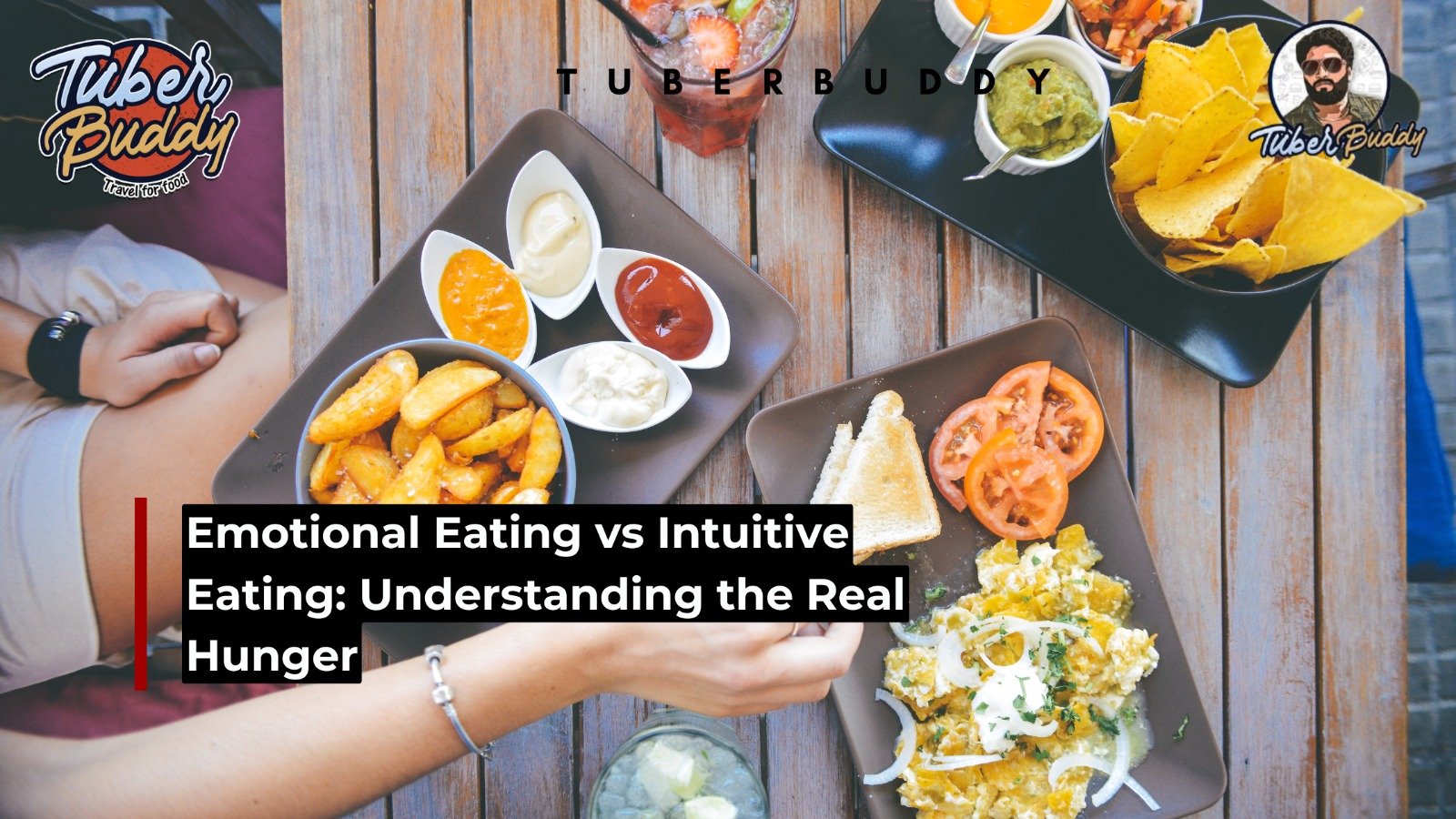Emotional Eating vs Intuitive Eating: Understanding the Real Hunger

Not every craving comes from the stomach. Emotionally influenced eating is more common than we realize—stress, boredom, or even joy can shape what and when we eat. This is where emotional eating begins. It’s not about nourishment. It’s about comfort.
On the other hand, intuitive eating is about listening to your body’s real signals—eating when you’re hungry, stopping when you’re full, and removing guilt from the process.
Understanding the difference between emotional eating and intuitive eating can help you rebuild a healthier, more peaceful relationship with food.
What is Emotional Eating?
Emotional eating is a coping mechanism. It often starts early in life when food is used as a reward or distraction. Over time, this turns into a pattern your brain relies on during emotional moments.
You’re not eating because you’re hungry. You’re eating to feel better.
Common signs of emotional eating:
- Hunger appears suddenly, not gradually.
- You crave specific comfort foods—usually salty, sugary, or crunchy.
- Eating feels urgent or impulsive.
- You continue eating even when full.
- Guilt or shame often follows.
This behavior is closely tied to dopamine release. Your brain is chasing a feel-good response, and food becomes the fastest source of relief.
But it’s short-lived, and the root emotion stays unresolved.
What is Intuitive Eating?
Intuitive eating is the opposite of emotional eating. It’s about paying attention to your body—not your feelings—to guide when and how you eat.
It removes guilt, rules, and restrictions. Instead, you eat when your body is physically hungry and stop when you’re comfortably full.
Key features of intuitive eating:
- Hunger builds slowly and starts in the stomach.
- Food choices are guided by what your body needs and what feels satisfying, not by emotional urges.
- You stop eating when you’re full, not stuffed.
- You don’t label food as “good” or “bad.”
You trust your body to guide you.
This approach takes time, especially if you’ve been emotionally eating for years. But it helps you break free from the cycle of bingeing, guilt, and restriction.
Why It Matters
Blurring the line between emotional and physical hunger may cause effects such as:
- Overeating
- Weight gain
- Guilt and emotional exhaustion
- Disconnection from your body’s signals
You might try to eat less or “be strict,” only to find yourself overeating again when emotions hit. This creates a frustrating loop—one that intuitive eating helps you break.
Emotional eating vs intuitive eating isn’t about control—it’s about connection. When you understand what your body actually needs, food becomes less of a crutch and more of a support.
How to Shift from Emotional to Intuitive Eating
Here’s how you can start making the shift—step by step:
- Pause before eating
Ask yourself, “Am I physically hungry, or just triggered by emotions?”
- Identify your feelings
Stress, boredom, loneliness—naming it reduces its grip.
- Create a non-food comfort list.
Journal, take a walk, listen to music, or call a friend.
Sit down without distractions, chew slowly, and enjoy each bite.
- Honor your hunger
Don’t skip meals—true hunger builds and needs to be met. Eating enough reduces cravings later.
- Drop the guilt
All foods can fit into your life. Intuitive eating is about balance, not perfection.
Final Thoughts
When it comes to emotional eating vs intuitive eating, the difference lies in why and how you eat.
Emotional eating is your brain’s way of chasing comfort. Intuitive eating is your body’s way of asking for nourishment.
Recognizing this difference takes practice, but it leads to more peace, less guilt, and a better understanding of yourself. You’re not just changing how you eat.
Let your body lead. Let your emotions speak. But don’t let food be the only answer.
For more such Talked-about content follow TuberBuddy!
